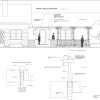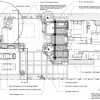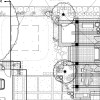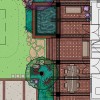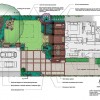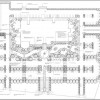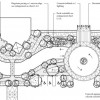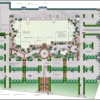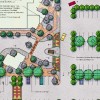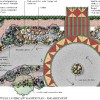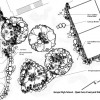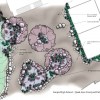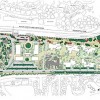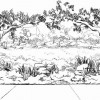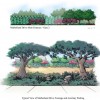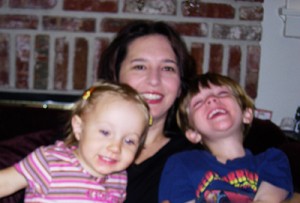
Juliet Kurth is a landscape architect in, Pasadena, CA. She lives with her companion Dean White, a digital artist, two children, and her cat Little Bit.
I graduated in one of the very last classes in landscape architecture at Cal Poly Pomona which was not required to learn a CAD program. I took pride in this and that I lacked any real technical savvy, except for a little bit of experience on a PC. I saw CAD drawings and other attempts at computer renderings as something which completely lacked the artistic aesthetics and emotion only found with a hand-drawn approach. So, for at least a couple of years after college, I blithely went on disdaining computers (especially Macs) and all CAD programs.
Then, I joined a firm which only used Macs. I complained at first — why did you have to click and drag (no sticking windows at the time) just to get a menu item? But slowly I saw how easy it was to maneuver through the operating system, and troubleshooting wasn’t too difficult either. So, after a few months, I became a Mac convert.
But I still did not like CAD programs.
About a year after becoming a Mac convert, an event took place which would soon change my perception of CAD: the Mac-only office bought a new, Macintosh computer, placed it on my desk, and brought in a PowerCADD trainer. I had taken a 12-week AutoCAD course just a few months before and came away knowing only that the program was difficult to a fault. So I begrudgingly paid attention to this PowerCADD “trainer” with the certain knowledge that learning this would be extremely difficult.
What can I say? I was wrong.
In less than a month after first sitting down in front of that new computer I completed my first set of construction documents. These plans looked better than nearly all of my hand-drawn packages, especially since there were no erasure marks from all the changes which occurred. And with the DWG translator, it was easy to communicate with our AutoCAD clients. Immediately after finishing my first CD package, I began completing conceptual presentation drawings and larger, more complex projects. And with the help of WildTools, I was soon spitting out renderings which many people thought were done by hand. The program was so comprehensible (unlike the other programs I’d seen) that I began training many of the others in the office, then later I left to do the same for another firm which was also reluctantly entering the technological age.
And now I’m working for myself using PowerCADD and WildTools. Only with a program like this am I capable of working by myself and still produce quality presentation drawings and easily read and understood construction drawings. One of the features I still love best is the easy translation between PowerCADD and Adobe Photoshop. With PerspectiveTools and SketchTools as part of WildTools, that “hand-drawn approach” I so reluctantly gave up is coming back to me more and more, even in this technological age. With PowerCADD I’m able to fool many into thinking they are looking at hand drawings and not CAD generated linework, and with Photoshop I can almost “digitally paint” these same drawings, creating a look that is very much my own. I cannot praise it enough.
Julieth Kurth
